What is the best time to visit India?
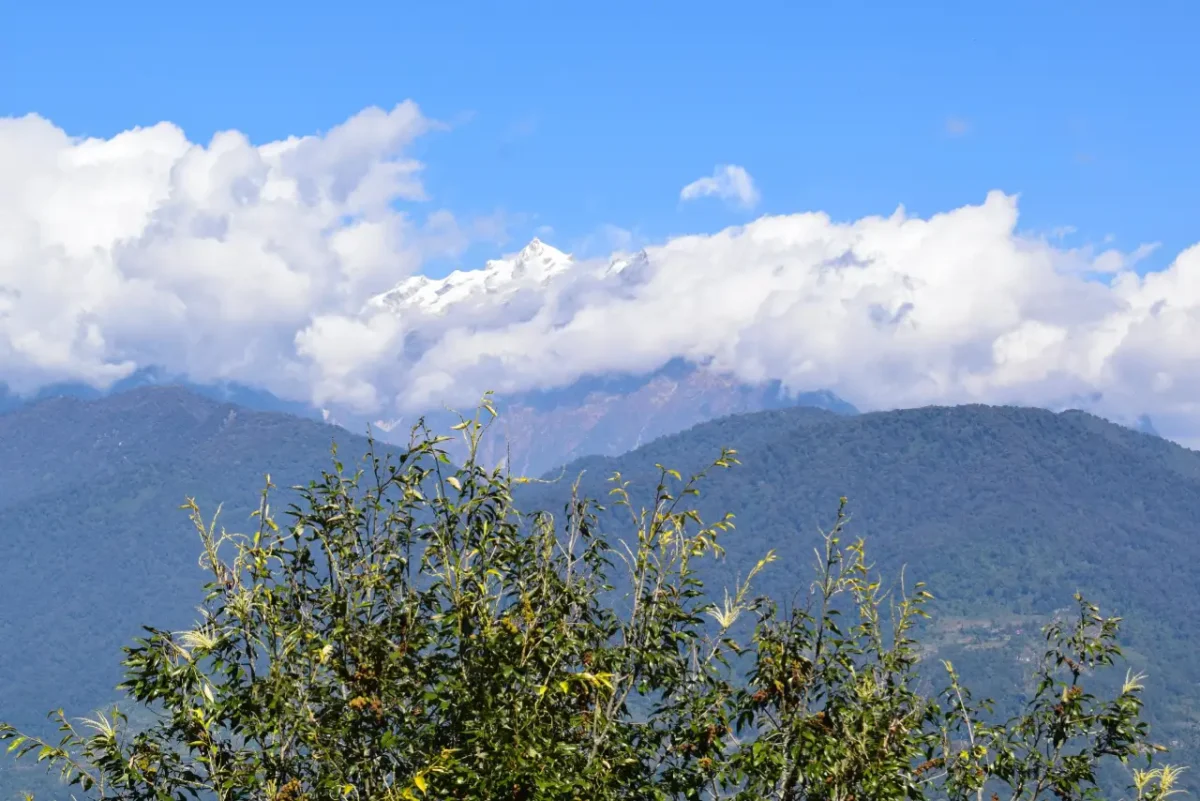
India is a fascinating country with a rich culture, history, and food to discover. India has something for everyone, from the breathtaking Himalayan peaks to the warm beaches of the south. The best time to visit India depends on the locations you want to visit and your preferences. With many seasons in the nation, each with its unique attractions, choosing the best time for your India vacation entails considering various weather aspects as well as cultural events. Whether you want to experience India’s bustling festivals, go on a wildlife safari, or rest in its serene landscapes, the timing of your visit is critical to fully appreciate the country’s vibrant splendor. If we talk about the best season to visit India. However, due to the various terrain of India, each location can be visited at different seasons of the year. After reading this essay, we propose that you look into our eVisa for India It includes useful information about visas and other topics.
The months of October to March mostly encompass the winter and the beginning of the summer. Summer months, from April to June, are extremely hot and should not be visited. During this time, people tend to flock to the mountainous regions, resulting in more tourists and higher expenses. After the sweltering months, the monsoons transform the terrain into a magical location. The level of humidity and rain, on the other hand, may not be what you were hoping for, but it may be a blessing for those looking to vacation on a budget. In most locations throughout the winter, the temperature lowers at night but remains ordinary or quite high during the day. It is necessary to secure an Indian visa before visiting one of these scenic destinations.
Travel guide by month with an Indian Visa
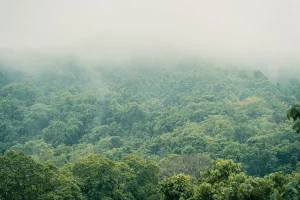
January
- Dry, warm weather
- Chilly nights in northern India
January is often a dry and pleasant month in India. Temperatures can get extremely chilly in the nights at higher altitudes in the central and northern regions of the country, at least in the southern part of the country. In the north of India, January is a frigid month, but it is a magnificent time to explore the snow-capped foothills of the Himalayas, learn about Tibetan spiritualism in Dharmsala, or have a cup of hot chai in Rishikesh’s cafes. If you want to visit Goa, with its golden beaches, or Kerala, where you can take a houseboat trip through palm-shaped backwaters, January is a terrific month to travel. January is also a fantastic month to visit Kerala, where dry, hot weather is usual, so plan ahead of time. January is a busy month in India, with various festivals taking place around the country, including the Bright Kite Festival in Rajasthan and the nationwide Republic Day celebrations on January 26.
February
- Golden Triangle busy
- Warm and sunny across most of India
February is an excellent time to visit India. Most of the country is experiencing warm and sunny weather, with monsoon rains still in the forecast. February is also the finest month in India to explore the Golden Triangle, which connects the city to Agra, Jaipur, and Jaisalmer. This is a great season to explore Maharajah’s forts, palaces, and Thar Deserts in Rajasthan. You won’t want to spend too much time in the sun, and you may even combine your visit with the Jaisalmer desert festival, where you can see the brilliant shades and magnificence of Rajasthani culture. There will also be a spectacular camel parade, folk dancing, turban-tying competitions, and traditional feasts. February is also an excellent season to visit Delhi and Hemis National Park in Ladakh, as snow leopards come from mountaintops in search of food.
March
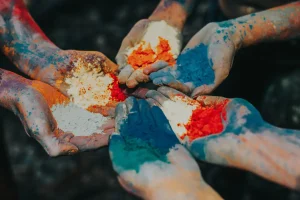
- Ideal hiking weather
- Temperatures beginning to climb
- Holi Festival
One of the greatest months to visit India is March. There’s great weather, especially for walking, and the Holi Festival is a big deal. This Hindu holiday celebrates the triumph of good over evil and is characterized by everyone spreading colorful paint powder around; you should dress in old clothes. The date varies according to the Hindu calendar, although it is normally around the last full moon in March. This is another ideal month to see Delhi before the searing temperatures set in, making it a great opportunity to complete the Golden Triangle of the Taj Mahal and Amber Fort, but while India in March is generally lovely, it is typically the wettest month of the year in far northern Kashmir.
April
- Temperatures climbing
- Book early for Easter
- Wildlife is more easily seen
April is one of the hottest months in India, with temperatures in Delhi and Kolkata reaching 37°C/99°F and Chennai reaching 38°C/95°F. Temperatures around the country tend to rise dramatically in April, so custom-designed excursions will take you sightseeing early in the morning and late in the evening when the heat is less oppressive. It is also one of the greatest periods to see wildlife in India. The month of April is ideal for observing animals in Ranthamgarh National Park. Because of the increasingly dry conditions, vegetation is thin and animals gather around waterholes. It’s a fantastic time to look for a Bengal Tiger. The Himalayas are exploding with blooms, the greenery is thin, and elephants and tigers emerge from the woods in search of water. Easter is a popular time of year to visit India, so make your reservations early. Travelling to India for tourism? Apply for an India Tourist Visa here!
May
- Good time for wildlife watching
- Daytime temperatures can hit 45°C
- Sightseeing best outside at midday
May is one of the hottest months in India, and it may be too hot for you if you can’t withstand the heat. You can escape the heat by going to the highlands, where the weather is cooler and the flowers are more colourful, or by going to Darjeeling, where you can enjoy cold breezes and delicious tea. At the end of May, the monsoon rains come in the southern states, bringing relief from the humidity. The rain does not necessarily last all day, but it is frequently fairly heavy. Make sure you have a waterproof sleeper or raincoat with you. It’s extremely hot, with temperatures reaching up to 45°C throughout the day, making travel in the Golden Triangle and Rajasthan quite uncomfortable. Many Indians visit the Himalayas around this time of year, and if the weather is fine, you may view Mount Everest, Lhotse, and Makalu – three of the world’s tallest mountains. A game drive early in the morning or late in the afternoon is a terrific way to beat the heat while watching the wildlife stretch in the shade.
June
- Pleasant trekking in Ladakh
- High heat and humidity elsewhere
- Thunderstorms are likely as the monsoon approaches
In June, you can feel the monsoon approaching in many parts of India, with heat and humidity peaking and thunderstorms possible whether you’re in Delhi, the Himalayas, Kerala, or Goa. Rajasthan, which is mostly made up of the Thar Desert, is exceptionally harsh. In contrast, June is the finest month to explore Ladakh, which is beginning to see milder temperatures and clear days. South India is out of the question (unless you want to get soaked), so head north to exchange beaches and backwaters for mountains, rivers, and yoga lessons. If you can stand the heat, now is a terrific time to take advantage of lower crowds and rates. You’ll need layers, but trekking is incredibly beautiful right now.
July
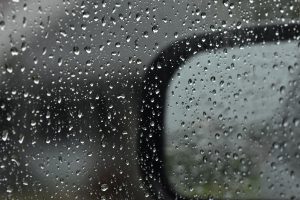
- Monsoon rains begin
- City sightseeing in Rajasthan
- Peak hiking season in northern Ladakh
The monsoon season in India normally arrives in July, bringing both a break and a lot of mud. However, while rain showers are common, they are also infrequent. July is a fantastic time to visit certain places in India if you want inexpensive pricing and few people. For example, in Tamil Nadu, the monsoon season does not begin until later in the year. The rains are so intense, especially in the south, that many national parks are compelled to close. In low-lying locations, there is also a risk of landslides and flooding. To avoid the weather, visit the stunning fortresses and palaces of Jaipur and Jaisalmer during the off-season. The architecture of Jaipur, Udaipur, and other Rajasthan cities remains unaffected by the rare downpour. The Thar Desert is also a fantastic area to get away from the rain. The majestic nature of Ladakh’s peaks and passes make July a perfect time for trekking in the far north.
August
- Hot and sunny weather in Ladakh
- Hefty rains in many parts of the country
- Some roads around Delhi can flood
When arranging a trip to India in August, do not be concerned about the monsoon season. According to Ayurvedic customs, the season is best for recovery therapies because the pores of the skin open wide, allowing for the absorption of oils and treatments. Ladakh’s mountains remain beautiful, while Rajasthan’s deserts stay reasonably dry. The rich vegetation of Kerala provides a nice mood among the rains, while the Ganges’ high water levels make river cruises popular. Visitors should be informed that malaria-carrying mosquitoes are present. If they don’t mind staying home during the rainy season, they may profit from fewer tourists and possibly cheaper lodging. Rain causes tropical environments in the south to become more lush. The second Sunday of August is an excellent opportunity to visit Kerala’s backwaters for snake boat races. Furthermore, the Golden Triangle and Varanasi are popular destinations for holidays such as Independence Day and Ganesha Chaturthi.
September
- The rains start to ease off
- Ladakh high season-ending
September is one of the greatest months to visit India if you’re willing to accept a rare shower. The monsoon rains clear up by the middle or end of the month, leaving the landscapes with raw beauty, while major attractions in Delhi and Rajasthan’s towns remain uncrowded and magnificent at this time of year, with lush countryside and full lakes thanks to the monsoon rains. September is considered a ‘shoulder month’ in India. Peak season is yet to begin, and the weather has been varied, to say the least, so you may frequently find good prices. September is also a big harvest season in India, so why not embark on a Real Food Adventure to discover the best of Indian cuisine?
October
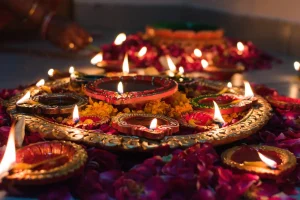
- Diwali Festival
- End of monsoon season
Visiting India in October is one of the best things you can do. The monsoon rains have stopped in the north, but there will be some showers in the south, and the air is clean. This is an excellent time to go on a bike ride and explore India at a slower pace. In India, October is not as busy as November. If Diwali (the Festival of Lights) falls in October, expect to see many homes and streets decorated with lights, as well as candlelit ceremonies and firework displays. For various reasons, Hindus, Jains, and Sikhs value this holiday. As a result, hotels will be extremely busy throughout Diwali. In addition to helping with eVisa for India, applicants can apply applications through our website.
November
- Peak season
- Most of India is ideal for sightseeing
- Diwali Festival and Pushkar Camel Fair
One of the greatest months to visit India is November. Much of the land is dry and bright, but not too hot; a light jacket for mornings and nights is recommended. Ladakh is cooler in the north, with colorful Buddhist festivities held at its many monasteries. In November, India is festival season: you might catch Diwali, the Festival of Lights, or the Pushkar Camel Fair, where you can watch events like tug of war or the tallest mustache competition in addition to haggling.
December
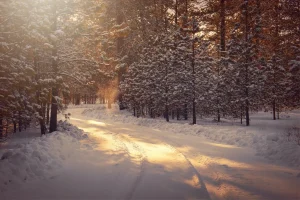
- Perfect for a warm Christmas getaway
- Cruising the Kerala backwaters especially popular
- Cool and foggy mornings and evenings
December is one of India’s coolest months, with a mix of cold weather in the north, a bright sky in the south, and plenty of sunshine. It is also one of the busiest months for overseas visitors to India, particularly in Goa. If you want to dodge the crowds, drive north to Varanasi to observe morning prayers in the murky Ganges or take a pink city rickshaw tour of Jaipur. In Delhi, where temperatures can be rather brisk in the morning and evening, plan ahead of time your accommodations and activities. In Kerala, you can take a houseboat trip down the backwaters or stay in a homestay because the state is lush green after the monsoon. December is also the finest month to visit India’s Golden Triangle. Remember that, aside from January and December is the wettest month in the majority of the country.
What to wear and pack on a trip?
It is advisable to wear light clothing such as light kinds of cotton or light woollens when visiting India since a blend of Indian and Western attire is acceptable in larger cities such as Delhi, Mumbai, and Bangalore. However, in major tourist areas like Rajasthan, it is recommended women wear lightly, avoiding clothing with plunging necklines or lengths over the knee. Additionally, it is recommended to wear shawls, stoles, or scarves to shield the head in hot and dusty locations, and to bring comfortable flat shoes because sightseeing trips require a lot of walking. Finally, it is essential to know that shows of affection, including between spouses, are considered unacceptable in many parts of India.
Which months have the best weather in India?
The months of October to March are usually the warmest in India. With milder temperatures over the majority of the country, now is an excellent time to go and explore. The summer heat is giving way to cooler temperatures, and the monsoon rains have halted. It’s an excellent time to go hiking, sightseeing, or participating in cultural events. This time of year corresponds to India’s winter season when temperatures in the north plains, central, and southern regions are lower than typical. This is an excellent time for travellers to experience various landscapes, historical sites, animal reserves, and festivals that occur frequently during this time of year.
Is India still cheap to visit?
In comparison to many other countries, India remains a comparatively inexpensive tourism destination. However, the cost of your trip to India will be determined by many things, including the type of lodging you select, the mode of transportation you select, your dining choices, and the activities you select. In general, basic expenses such as lodging, local transit, and food can be relatively reasonable, particularly if you choose budget lodging and local restaurants.
Is India worth going to?
India is unquestionably a must-see destination, with an abundance of culture, scenery, and legacy. India provides a wealth of experiences, from the awe-inspiring Himalayas to the peaceful seas of Kerala to the vibrant cities bursting with life. India is a location that would leave an indelible impact on every traveller, from the vibrant festivals to the wonderful cuisine to the ancient monuments, holy sanctuaries, and kind people. Despite its limitations, India provides opportunities for personal growth, cultural immersion, and the creation of enduring experiences. It is an excellent choice for travellers seeking adventure, understanding, and a true cultural experience.
Which is the busy season for India?
Between October and March is the biggest season for tourists in India. Warmer weather in most sections of the country and an inflow of tourists due to festivals, cultural activities, and mild weather characterize this time of year. This is particularly true in prominent tourist destinations such as Rajasthan and Delhi, as well as other towns such as Goa and Kerala. As a result, demand and costs for hotels, travel agencies, and tourist attractions may rise at this time of year.
Which is the best season for Travelling in India?
If you’re thinking of visiting India, the winter months are ideal. From October to March, the weather is usually lovely and cool, allowing you to visit historical monuments, cultural festivals, and outdoor activities. Plus, you won’t have to deal with the heat or monsoon rains, making for a lot more pleasurable and enjoyable experience!
Finally, the best time to visit India depends on the individual’s interests, the experiences they want to have, and the regions they want to see. In general, the winter season between October and March is the best time to visit most parts of the country since it offers excellent weather, warm temperatures, and a range of cultural festivals and outdoor activities. However, depending on the climate and local activity, various places may have distinct peak seasons. When organising a trip to India, it is critical to consider elements such as festivals, Himalayan hiking, historical places, and various landscapes.
